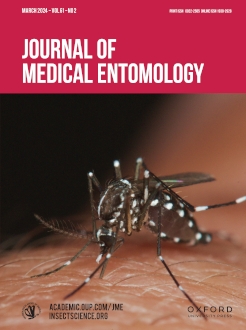We developed a predictive model for activities and outbreaks of female Aedes albopictus Skuse, using meteorological data. The number of Ae. albopictus collected from human bait-sweep net collection (h-BNC) surveillance, conducted by the local government between 2010 and 2019 in Japan, was adopted as a mosquito-activity indicator. The best model was composed of the backward cumulative and backward moving mean of meteorological data (parameters that were measured daily include mean, maximum, and minimum temperature, mean humidity, amount of precipitation, maximum wind speed, and sunshine hours). The root mean squared error (RMSE) and the coefficient of determination (R2) of the best model for the test set, which was not included in the training dataset, were 1.33 and 0.74, respectively. The best model was applied to predict the number of Ae. albopictus obtained from our own h-BNC surveillance in Okazaki City, Japan. RMSE and R2 of the results were 1.17 and 0.92, respectively.The present model, using publicly available meteorological values, can predict the collection number of adult Ae. albopictus using h-BNC surveillance thereby providing information to control mosquito activities and outbreaks.Therefore, it may be possible to mitigate the risk of mosquito-borne infections and secondary adverse effects of mosquito bites, such as infectious impetigo and deterioration of the quality of life.
How to translate text using browser tools
29 December 2023
Density predictive model for an outbreak in adult female Aedes albopictus (Diptera: Culicidae) in Japan
Satoru Watanabe,
Kunihiko Nakane,
Yugo Kitahara,
Nanami Nishihara,
Hiroshi Nomura,
Fumiaki Fukase,
Kohei Uno,
Takaaki Kondo,
Jun Ueyama
ACCESS THE FULL ARTICLE
It is not available for individual sale.
This article is only available to subscribers.
It is not available for individual sale.
It is not available for individual sale.

Journal of Medical Entomology
Vol. 61 • No. 2
March 2024
Vol. 61 • No. 2
March 2024
human bait-sweep net collection
mosquito
predictive model




